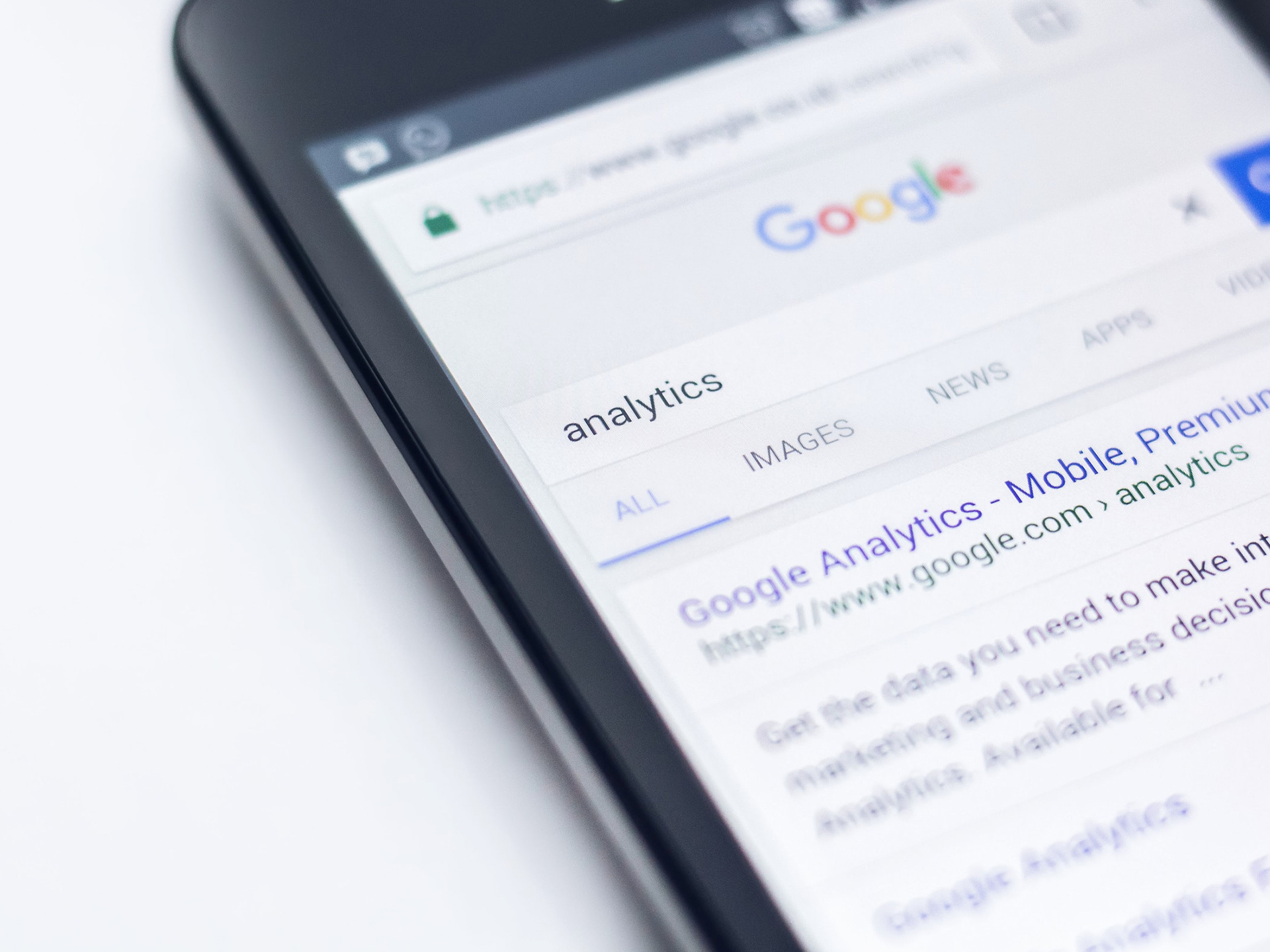Originally published August 27, 2021 , updated on July 10, 2025
Even if you create great content, if no one sees it, it won’t do much for your business. It won’t bring in leads. It won’t convert customers. And it won’t drive revenue. Which is getting your content distribution strategy right is so important.
At its core, content distribution strategy is about making sure your content doesn’t just sit there – that it gets seen, engaged with and acted on. It’s everything that happens after you hit publish. If you don’t include distribution in your content strategy, you’re just hoping the right people stumble across your work – which is quite a gamble.
So how do you get distribution right? It’s about choosing a good mix of channels, formats and timing – based on where your audience is and how they consume content. And partnering with the right contribution distribution agency or marketing firm can be a big help.
What Is Content Distribution Strategy?

Here’s what trips most people up. Great written content is only half the battle. Sharing a blog post on social media, sending a quick email blast, or running a one-off ad campaign – all of these can be good for your business. But if they’re once-off’s, or not part of a bigger picture, none of those activities count as content distribution strategy. At best, that approach will drive a little bit of engagement with your business. But it’s not built to deliver consistent results.
Real strategy is intentional. It connects content with the right people, on the right platforms, in a way that’s measured and optimized over time. When you’re just “posting and hoping,” you miss key parts: like audience research, platform selection, timing, format adaptation and performance tracking.
Similarly, if you’re using the same message across every channel, ignoring data, or guessing where to publish next – you’re not thinking strategically. And that’s where content distribution services can make a real difference.
A good content distribution agency will help you map out a plan that works across owned, earned and paid channels – tailored to your goals and your audience. They’ll make sure your content doesn’t just exist online, but rather that it gets seen and engaged with, and drives business results. So if your current approach feels scattered or one-dimensional, it might be time to level up your approach.
Types of Distribution Channels and Their Role
To get your content in front of the right people, you need to understand the different channels available. And how each one helps your message travel further.
The Role of Owned Media
Owned media is everything you have full control over – your website, blog, email list, and social accounts. It’s reliable, consistent and cost-effective, which makes it a great long-term investment. Especially because you get to control the message and the timing.
The downside? It takes time, and expertise, to build an audience. And without that audience, and some well-placed promotion, even your best work might not get the visibility it deserves.
The Value and Limitations of Earned Media
Then there’s earned media. This is when other sources talk about your company, product or service. That could include social media shares and mentions, backlinks from other articles, or media coverage. Earned media isn’t something you can buy, and that’s exactly what makes it so valuable. It builds credibility and trust, often helping your brand to reach new audiences you wouldn’t reach on your own.
But earned media is unpredictable. You can’t control how or when it happens, and it’s tough to scale consistently.
When Paid Media Makes Sense
Paid media, on the other hand, is immediate. It gets your content in front of the right people fast – through ads, promoted posts or sponsored placements. It’s a great way to boost reach and target specific segments.
But it comes at a price. And once you stop spending, the traffic usually stops. It also requires thoughtful execution. Done poorly, paid placements can feel forced or inauthentic. Which might actually do more harm than good in the long run when you fail to build trust with your intended audience.
The Best Content Distribution Strategies Blend All Three
An effective content distribution strategy is one that understands, and takes advantage of, all three distribution channels. It combines using owned media (for stability), with valuable earned media (to boost credibility) and paid media (for growth). With each channel used where it makes the most sense for your goals, budget and audience.
How to Build a Winning Content Distribution Strategy
Now that you understand the roles of owned, earned, and paid media, the next step is knowing how to connect the dots – turning those channels into a content distribution strategy that works. Here’s how to approach it:
Step 1: Know Your Audience and Set the Right Goals
Every effective content distribution strategy starts with clarity around two things: who you’re talking to and what you’re trying to achieve.
The first requires looking beyond general demographics and digging into behaviour. Where does your audience spend their time? Statista reports that Facebook, YouTube and Instagram are the most downloaded platforms, which makes them a great general option for companies to get their message seen. But if you’re a niche software company, with a bespoke offering aimed at coders, something like Stack Overflow or even Reddit might also be a good bet.
Next, consider which formats your audience responds to. Are YouTube explainer videos about your latest SaaS offering the way to go? Or is your audience more likely to open a newsletter or engage with a LinkedIn post? And when are the ideal times to post content to ensure maximum engagement and the highest number of views?
These types of timing, format, and tone considerations are all crucial to getting your content distribution right – and working with a content distribution agency can save you hours of guesswork.
A good agency uses data, audience research, and platform insights to shape a strategy that’s grounded in how people actually behave online. They strip out the assumptions and help you build a strategy based on facts.
They can also help you figure out the “why” of your campaign. Why should people be interested in your product or service? And what do you want them to do once you’ve got their attention? Are you focused on just capturing leads, or on building brand awareness and advocacy? Or is the goal to increase conversions?
Keep in mind that you don’t need to do all those things at once. Your agency can help you narrow your strategy down to one or two options – or to build complementary strategies for different goals. And once your goals are outlined, it’s easier to decide which platforms to use, what content to push, and how you plan to measure success.
Step 2: Choose the Right Mix of Channels and Formats

Once you know who you’re targeting and what success looks like, it’s time to pick the mix of channels and content types to get you there. That includes a healthy balance of owned, earned, and paid media.
To recap from above:
- Owned media (your website, blog, and email) gives you full control over the content posted and builds long-term value and trust in your company’s expertise.
- Earned media, like shares or guest contributions, builds trust and expands your reach.
- Paid media allows you to target key audience segments and rapidly scale content campaigns.
By using the right channels in the right way, you can build up a robust content distribution strategy. But that’s often easier said than done. In fact, research shows that only 29% of marketers believe that their organization has found the right balance between paid, earned and owned media. And the balance often shifts depending on the goals of your content campaign.
This is where content distribution services come into play. A skilled content services team will help you adapt your content to each channel, and in response to different goals. They’ll manage scheduling, fine-tune messaging, and make sure your content feels tailored, not recycled.
They can also help you refine content to suit different use cases – because what works in an email won’t land on social media. And a long-form blog post isn’t the same thing as a paid ad.
Step 3: Measure What’s Working
A distribution strategy isn’t something you complete and then forget about. You need to track how your content is performing across different channels, spot patterns, and use that data to improve future campaigns. Are people clicking but not converting? Are certain platforms consistently underperforming? Are people bouncing off your owned pages? This is all useful information.
The advantage of working with a content distribution agency is that they don’t just execute a strategy – they analyze results and adjust accordingly. This process surfaces what’s working in your favor, and flags what’s not – which helps you to make decisions that actually improve engagement.
Ultimately, a winning content distribution strategy is less about volume and more about clarity, consistency, and continuous improvement. It turns content from a static asset into something that’s actively driving growth – week after week.
Content Distribution Tools and Platforms
To execute a strong content distribution strategy, you also need the right tools. For example, scheduling software, SEO and analytics tools, and email automation. Depending on your goals, it can be a long list. In general, a strong selection of these tools can make it much easier to get your content out on schedule, and they can really streamline your workflows and help your content perform. But there are caveats.
For one thing, many content distribution tools aren’t free. And once you start stacking a few of them together, the monthly costs add up quickly. As for your tech stack: it can get really complicated, really quickly. Especially if you’re trying to integrate tools into other business software you regularly use.
Fortunately, a good content distribution agency will already have these kinds of tools at their disposal. Along with the expertise to maximize the value they bring to your strategy. Meaning that you get access to a high-quality tech stack, without taking on the financial and operational burden of managing it all yourself.
That’s one of the less talked-about advantages of content distribution services. A good agency doesn’t just offer strategy and execution – they give you access to a full toolkit that would otherwise cost you hundreds (if not thousands) each month.
Picking the Right Tools for the Job
Your content agency can also help you pick the right tools to accomplish specific goals. Here’s a quick breakdown of some of the most common content strategy tools and what they’re used for:
Social media scheduling tools like Buffer and Hootsuite help manage and publish content across multiple platforms. They keep your messaging consistent, allow for strategic scheduling, and make it easier to track engagement in one place – meaning they’re great if your goal is to bolster brand engagement and maintain a strong brand voice across touchpoints.
Email marketing and automation platforms like Mailchimp, Zapier and HubSpot are key if email is a core part of your content distribution strategy. They handle list segmentation (based on parts of your audience you’re trying to target), automated sends, A/B testing, and performance tracking. So, if refining your email marketing is at the heart of your strategy, these are essential additions to the toolkit.
SEO and optimization tools, like Ahrefs and SEMrush, help ensure your content is findable by showing you which keywords to optimize in your content. If part of your goal is to drive organic traffic or build search visibility over time, these tools are almost non-negotiable. Note though that while this may seem straightforward, getting SEO right is a delicate art – and it can be make or break for your content.
Content planning and collaboration tools, like Notion and Airtable, are used when you are developing content with multiple team members, or across departments and regions. These tools help you manage workflows and they’re indispensable for keeping campaigns on track. Especially if one of the problems you are trying to tackle is a lack of cohesion in your content or poorly targeted campaigns.
Finally, analytics platforms, such as Google Analytics and HotJar, are your go-to for digging into content performance data. But be warned, like SEO, analytics can get complicated. So it’s often worth having expert backup. Get it right though, and you’re likely to see a huge jump in key metrics like engagement and conversion.
Getting Your Content to Show Up in AI Search
Another big consideration for your content strategy is that the way people search is changing. Nowadays, many people use AI tools like ChatGPT, Gemini and Perplexity (it has an astounding 10 million active monthly users) to find answers. And even when they do use Google, the AI summary at the top of the search results is often the only thing people read.
The thing is, AI platforms and summaries often cite content directly in their answers. Content that readers might then click on to get more information. Which means that it’s more important than ever to make sure your content is optimized to be selected as an answer by these tools.
In short: showing up in AI search builds authority fast. It drives traffic and increases brand visibility, positioning you as a trusted source in your niche. And unlike traditional SEO, smaller or newer brands have just as much chance of being included.
Most content marketing agencies have already clued into these facts and are actively developing strategies to improve visibility in AI results. These include:
- Writing in a straightforward, question-based format, with clearly-defined answers placed early in the content.
- Using natural language. AI tools favor content that sounds human, not robotic.
- Authoritative content with a focus on genuinely useful, specific insights.
- Optimizing content for retrievability. That means clear headings and well-structured content.
- Sharing original data, perspectives, or examples.
- Mentions by trusted publications (often earned media)
Common Content Distribution Mistakes

Alright, so now you have a clear idea of what to do. But even with great content, distribution often falls short because of a few easily-avoidable mistakes. Let’s run through the biggest issues.
1. Over-Reliance on a Single Channel
When businesses put all their energy into, say, LinkedIn or email, they leave themselves vulnerable to platform changes or audience shifts. Especially if they’re neglecting one of three major channel types (paid, owned or earned) as a result. The fix? Try to build a balanced mix across owned, earned and paid media, and look for opportunities to spread out into different formats or platforms. It spreads your reach and reduces risk.
2. Copy/Pasting the Same Content Across Platforms
Nothing kills brand engagement faster than someone reading the exact same thing in a different place. This goes for how content is formatted as well, because it’s usually very obvious when a business hasn’t done the basic research to find out what’s appropriate for a specific platform. For example, a simple blog post might work on LinkedIn. But on other social platforms a visual carousel or a short video of the same content might be a better option.
Content distribution services are usually experts at pinpointing the best way to deliver content in different venues and they can help you make sure your content feels native and relevant across platforms.
3. Poor Timing
Timing is another weak spot. Publishing without data means you’re guessing when your audience is paying attention. A content distribution agency can help you analyse peak activity times and schedule accordingly so your content has the best chance to land. They can also help you maintain consistency. A few strong posts followed by silence won’t build trust or momentum. An editorial calendar, managed either in-house or by your agency, keeps things on track.
4. No Measurement or Poorly-Defined Metrics
Finally, too many brands skip measurement entirely, often because data wrangling is just too complicated. But if you’re not tracking how content performs, you can’t improve it. That means tracking performance of individual pieces of content and across campaigns, platforms and regions as well. Staying on top of what drives outcomes at all of those levels allows you to adjust your strategy in a timely way.
It’s also important to make sure you’ve defined the right metrics to use for your goals. For example, if the goal is brand awareness, you’d want to track reach, impressions and shares. But if you’re focused on lead generation, you’d track form submissions and click-through rates instead.
Conclusion
Content distribution is the difference between content that gets seen and content that gets forgotten. Knowing your audience, choosing the right channels, adapting your message and tracking what works are the ingredients to your content ecosystem.
Working with a content distribution agency can shift the weight off your shoulders and help your content work harder. Whether you’re just getting started or looking to sharpen what you’re already doing, now’s the time to rethink how your content shows up. Don’t let it sit idle. Get it moving, get it seen and make sure it delivers on the effort that went into creating it.
Ready to take your content further? Goodman Lantern’s expert team is here to help you build a content distribution strategy that leaves competitors in the dust. Let’s chat.
Post Views: 1323


















